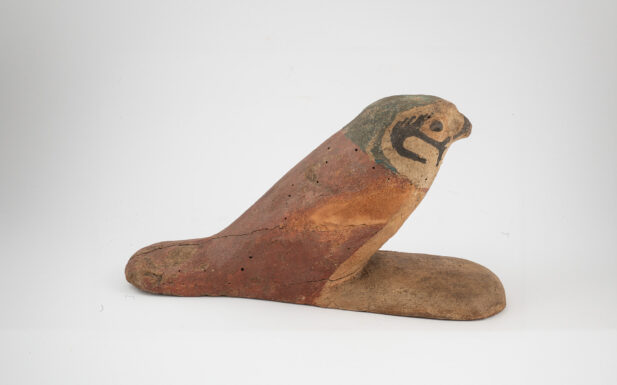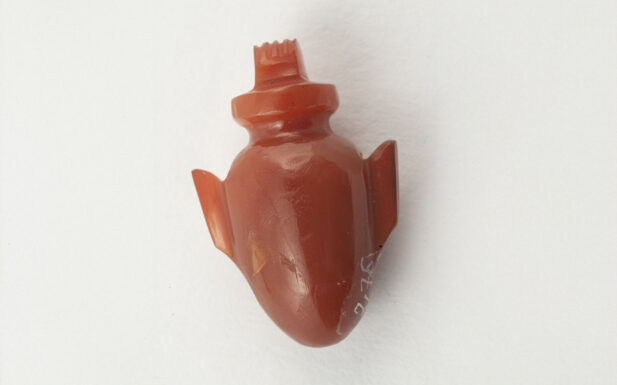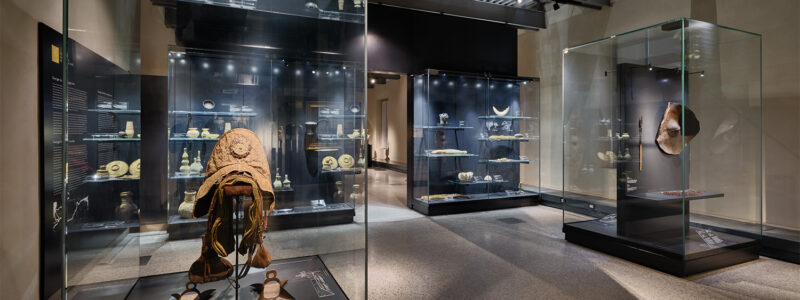The head, originally part of a statue slightly larger than life-size, is one of the few Hellenistic bronzes that have survived to the present day. Although devoid of any royal attributes, a comparison with some coins issued at the beginning of the reign of Ptolemy V (204-180 BC) has made it possible to recognise of his mother’s face, Arsinoe III (246-204 BC), elder sister and wife of Ptolemy IV (222-204 BC). Characteristic of her portrait are her hair parted in the centre, gathered at the sides into two bands forming a knot at the nape of the neck, as well as the sinuous lock of hair in front of her ear and the slight hump on her nose. The eyes, now missing, were made of other material. Like other Ptolemaic queens, Arsinoe III played a prominent role in life, during the reign of her husband, whom she even accompanied into battle, and also after death, as a dynastic deity. The statue to which this head belonged to was perhaps erected following the establishment of this posthumous cult.
Ptolemaic period, late 3rd – early 2nd century BC.
bronze








